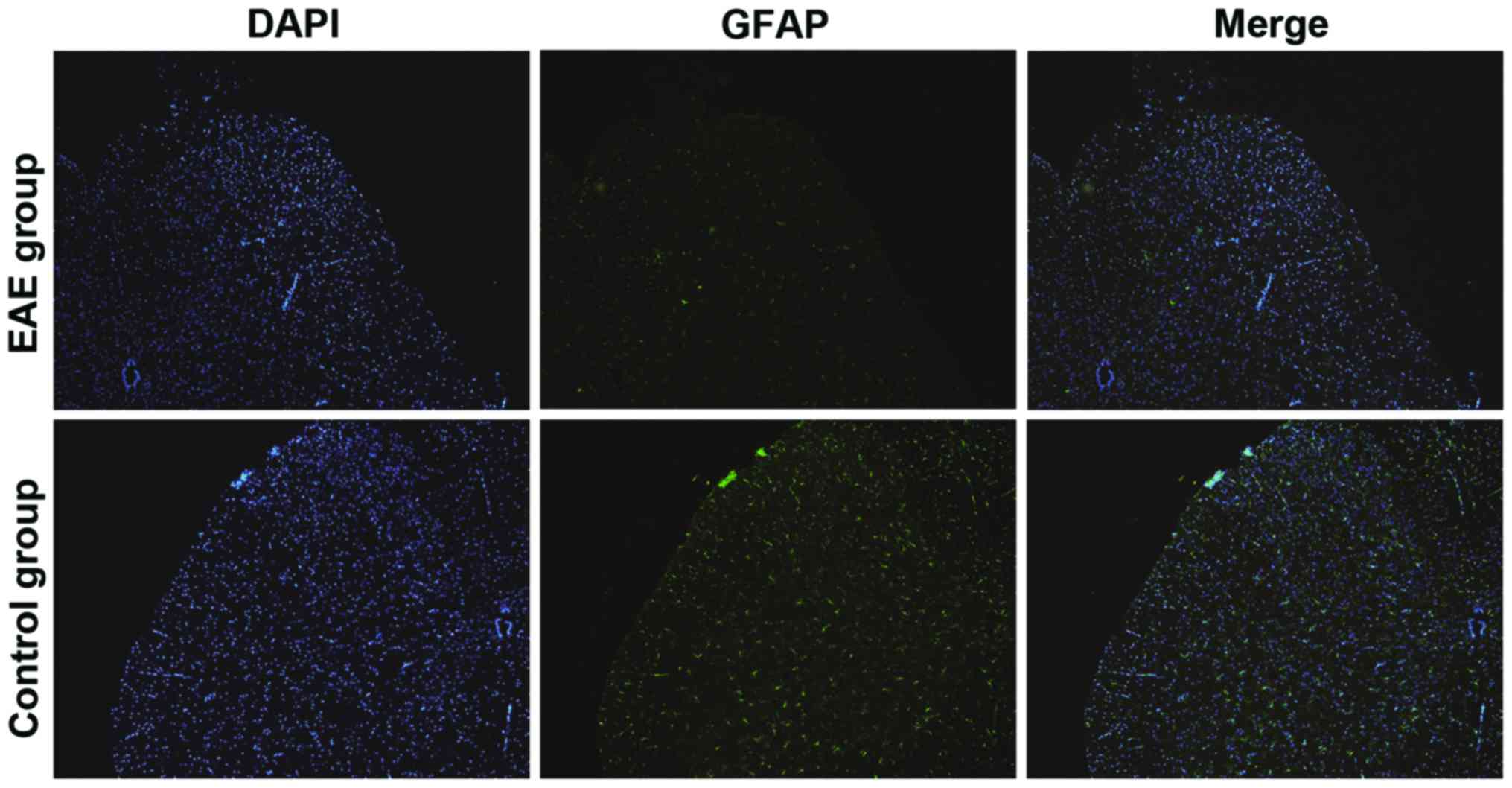Activation of astrocytes and expression of inflammatory cytokines in rats with experimental autoimmune encephalomyelitis
- Authors:
- Published online on: September 27, 2018 https://doi.org/10.3892/etm.2018.6798
- Pages: 4401-4406
-
Copyright: © Zhang et al. This is an open access article distributed under the terms of Creative Commons Attribution License.
Metrics: Total
Views: 0 (Spandidos Publications: | PMC Statistics: )
Total PDF Downloads: 0 (Spandidos Publications: | PMC Statistics: )
Abstract
The aim of the study was to investigate and discuss the activation of astrocytes and the expression of inflammatory cytokines in rats with experimental autoimmune encephalomyelitis (EAE). Twenty Wistar rats were randomly divided into the normal control (n=10) and EAE group (n=10). The rats in the EAE group were injected intraperitoneally with myelin oligodendrocyte glycoprotein 35-55 emulsion, and those in the control group were injected with the equivalent volume of normal saline. Wear neurological function scale was applied to evaluate the neurological functions of the rats, and the weight changes were recorded. At 21 days after immunization, hematoxylin and eosin staining was used to detect the histomorphology, and immunofluorescence was used to measure the activation conditions of the brain astrocytes. Reverse transcription‑polymerase chain reaction and western blot analysis were utilized to detect the messenger RNA (mRNA) and protein levels of inflammatory factors. The disease occurred in rats of the EAE group at 9 days after immunization, and the incidence rate was 80%. The Wear score of the rats in the EAE group was significantly increased compared with that in the control group (P<0.05). At 9 days after immunization, the weight of the rats in the EAE group was obviously lower than that in the control group (P<0.05). The inflammatory lesion of rats in the EAE group mainly occurred in the region of brain parenchyma. The glial fibrillary acidic protein level in the brain sections of the rats in the EAE group was markedly elevated compared with that in control group. The mRNA and protein levels of interleukin-10 in the rat brain in EAE group were decreased notably (P<0.05), while those of interferon-γ and tumor necrosis factor-α were increased significantly (P<0.05). The significant increases in the activation level of astrocytes and inflammatory cytokine level have a close relationship with EAE progression.















